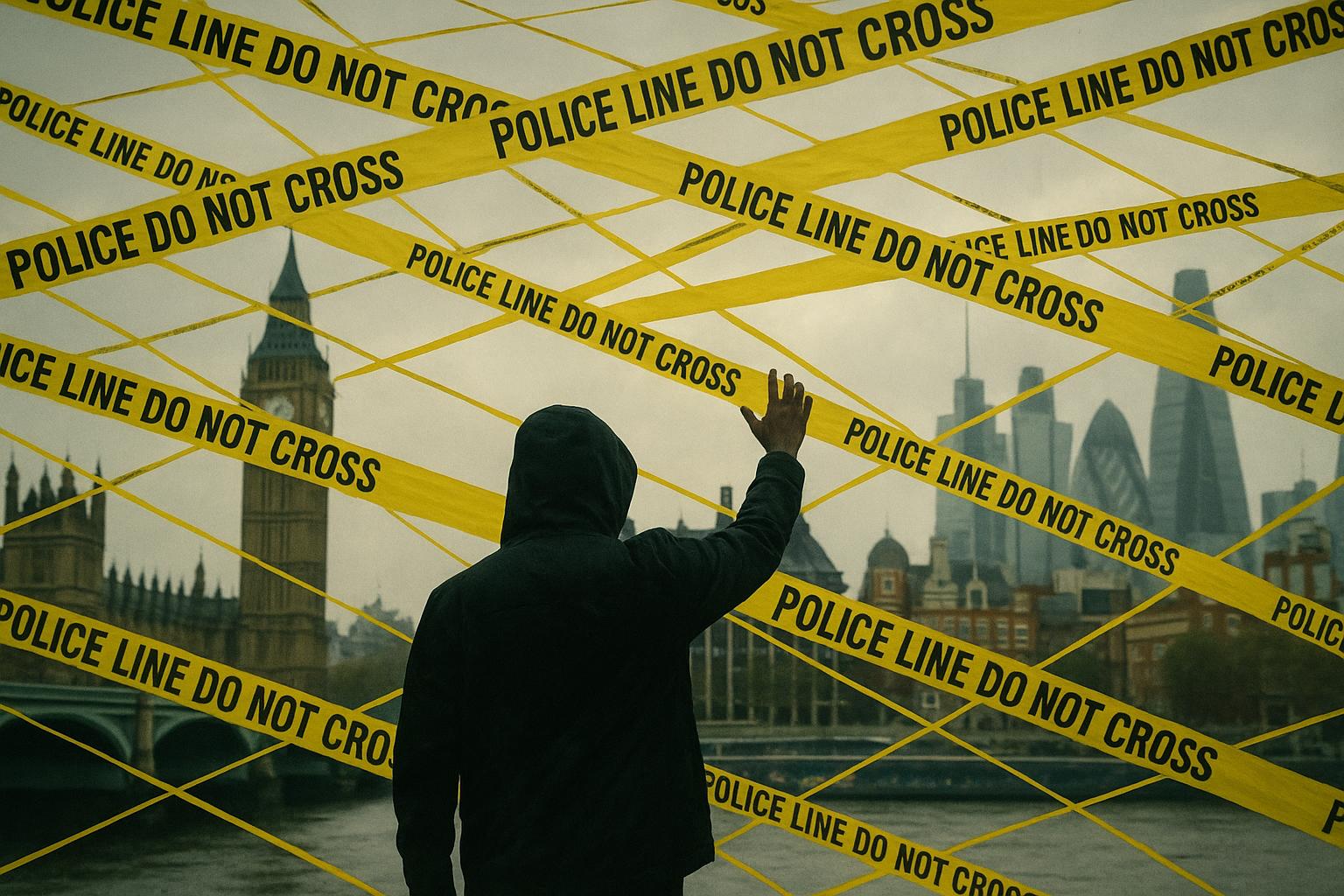A distressing incident unfolded in Muswell Hill, London, where a woman was filmed cutting down yellow ribbons tied to railings as a tribute to Israeli hostages held captive in Gaza. The footage, recorded at Princes Avenue Park, captured the woman systematically removing the ribbons with scissors before being confronted by onlookers. When challenged, the woman defended her actions, claiming that the ribbons “condone genocide,” remarks that sparked outrage among those present and online.
The yellow ribbon carries a deeply symbolic history, originally gaining prominence during the 1979 US-Iranian hostage crisis as a sign of solidarity with captives. The symbol was popularised by the song "Tie a Yellow Ribbon Round the Ole Oak Tree," which tells of a prisoner of war’s return. Since then, the ribbon has been widely used to show support for missing persons, soldiers overseas, and more recently, the Israeli hostages taken by Hamas during the brutal attacks on October 7, 2023. The ribbons in Muswell Hill were part of a community memorial, reflecting the large local Jewish population’s ongoing grief and hope for those held prisoner.
The woman’s removal of the ribbons drew condemnation from residents and activists alike. Miranda Levy, a Jewish journalist who recorded the act, described it as “so insensitive,” especially in light of recent terror attacks such as the one at the Manchester synagogue that had occurred shortly before the incident. She emphasised the emotional significance of the ribbons, imploring the woman to “put up your own stuff but don’t take ours down.” This act of vandalism is not isolated; similar incidents have provoked tensions in other London neighbourhoods. For example, in June 2025, a video emerged showing individuals removing yellow ribbons from lampposts in a Jewish area of London, while in May 2025 anti-Israel protesters in Swiss Cottage took down ribbons that they claimed symbolised “Jewish supremacy.”
The ribbons also serve as a poignant reminder of the ongoing trauma faced by the hostages’ families. Heidi Bachram, whose relatives were killed and taken hostage in the October 7 attacks, described the cutting down of ribbons as "repulsive." She highlighted how such acts of vandalism are attempts to dehumanise the victims, who are believed to be starving and suffering in terror tunnels controlled by Hamas. Official estimates indicate that Hamas murdered over 1,200 people and took around 251 hostages during the attacks, with only about 20 of the captives thought to still be alive.
The London Metropolitan Police have launched an investigation after being made aware of the video showing the ribbon removal. Officers are reviewing the footage to determine whether any offences, including hate crimes or criminal damage, have been committed. This inquiry reflects a broader concern about the security and well-being of Jewish communities in the UK, who have faced multiple incidents of anti-Semitic vandalism amid the heightened tensions related to the conflict in Israel and Gaza.
The significance of the yellow ribbon continues to resonate not only in the UK but across affected regions. In Jerusalem, for instance, an incident in September 2024 saw Palestinians attempting to enter the city disguised as Jews, displaying yellow ribbons to symbolise solidarity with the hostages, highlighting the complex political and security challenges entwined with the symbol.
Public expressions of support for the hostages have been widespread. Tens of thousands participated in marches across London in mid-2024, calling for the release of those held captive by Hamas. These rallies have been marked by Israeli flags, yellow ribbons, and calls to "bring them home," underscoring a community united in solidarity and concern for the hostages’ fates.
The act of cutting down the yellow ribbons in Muswell Hill starkly contrasts with these demonstrations of support. It exemplifies the deep divisions and animosities that have surfaced alongside the ongoing conflict and highlights the emotional and symbolic battlegrounds that public memorials and gestures of solidarity can become.
📌 Reference Map:
- Paragraph 1 – [1]
- Paragraph 2 – [1], [2], [3]
- Paragraph 3 – [1], [2]
- Paragraph 4 – [1], [3]
- Paragraph 5 – [1], [6]
- Paragraph 6 – [1], [6]
- Paragraph 7 – [4], [1]
- Paragraph 8 – [5], [7]
- Paragraph 9 – [1], [3], [5]
Source: Noah Wire Services
